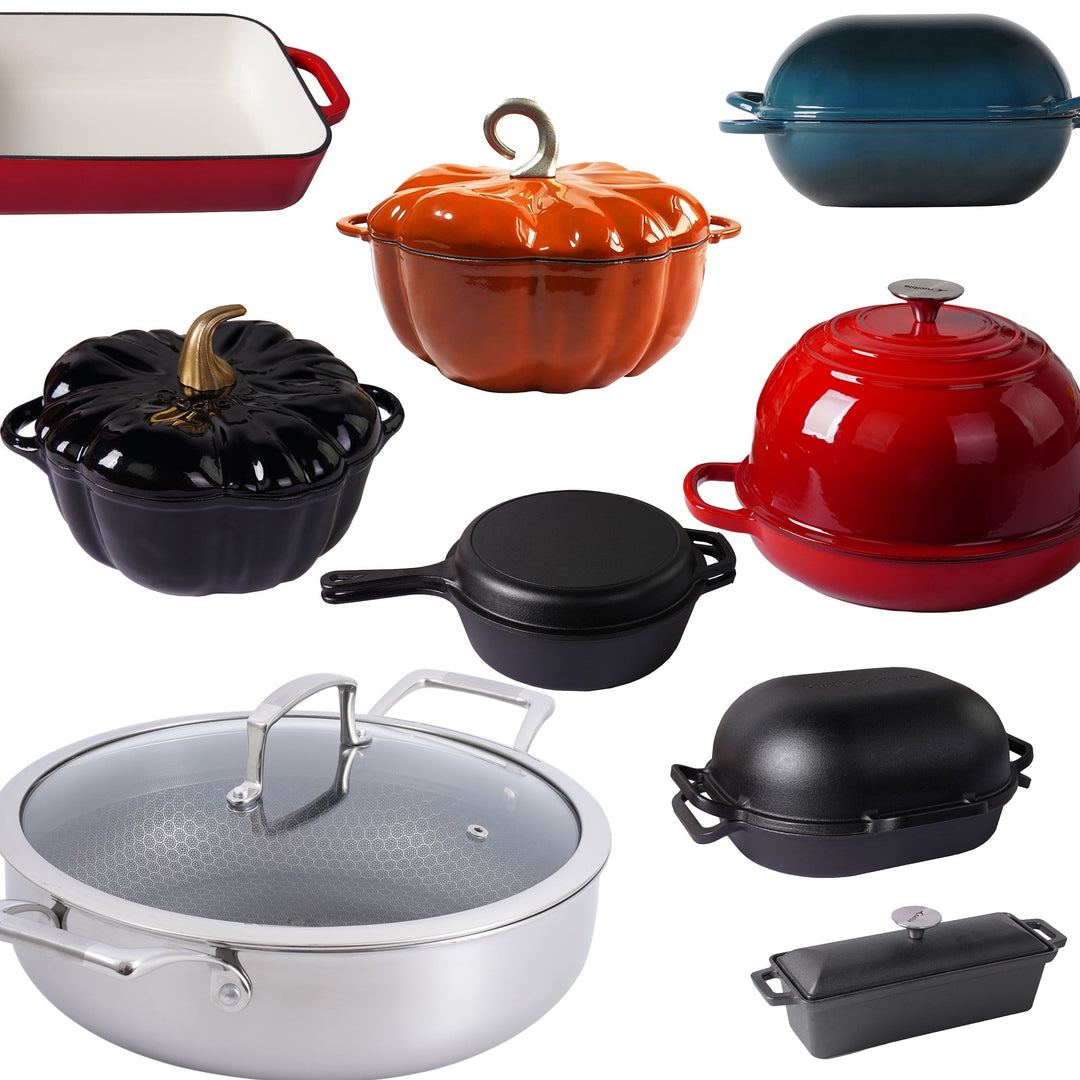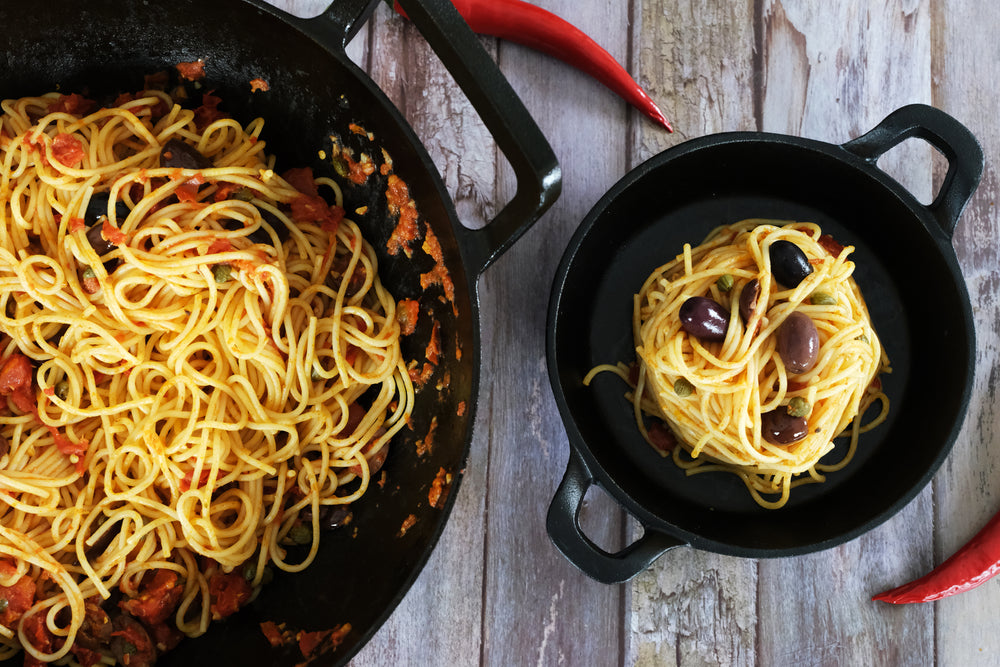Emaljerad gjutjärnsrostpanna: Fördelar och nackdelar med en köksklassiker

När det gäller rostning, en matlagningsmetod som har uppskattats i århundraden, spelar valet av köksredskap en betydande roll för resultatet av rätten. Bland de många tillgängliga alternativen utmärker sig emaljerad gjutjärnsrostpanna som ett klassiskt och mångsidigt val. Älskad av professionella kockar och hemmakockar lika, har denna köksutrustning sina för- och nackdelar. I detta blogginlägg kommer vi att utforska för- och nackdelarna med att använda en emaljerad gjutjärnsrostpanna för matlagning, vilket hjälper dig att fatta ett välgrundat beslut för ditt kök.
Fördelar med att använda en emaljerad gjutjärnsstekpanna
-
Överlägsen värmehållning: Emaljerat gjutjärn utmärker sig i att behålla och fördela värme jämnt. Denna egenskap säkerställer att dina rostade rätter tillagas jämnt, vilket resulterar i saftiga köttbitar, karamelliserade grönsaker och perfekt rostade läckerheter.
-
Mångsidighet: Emaljerade gjutjärnsstekpannor är otroligt mångsidiga och fungerar både på spisen och i ugnen. Denna egenskap gör att du kan bryna kött på spisen och sedan flytta pannan direkt in i ugnen för rostning. Dess anpassningsbarhet gör den idealisk för olika matlagningsmetoder och recept.
-
Lätta att rengöra: Emaljbeläggningen på dessa pannor ger en non-stick-yta, vilket gör rengöringen enkel. Till skillnad från traditionella gjutjärnspannor kräver emaljerade versioner ingen inbränning och är diskmaskinssäkra, vilket förenklar din eftermatlagningsstädning.
-
Attraktiv presentation: Emaljerade gjutjärnsstekpannor finns i en mängd livfulla färger, vilket gör dem till en vacker serveringsrätt som kan gå direkt från ugnen till bordet. De tillför en touch av elegans till din matupplevelse och höjer presentationen av dina rostade skapelser.
-
Motståndskraftig mot rost och reaktivitet: Emaljbeläggningen på gjutjärnet förhindrar att metallen rostar och reagerar med sura eller basiska livsmedel. Denna egenskap säkerställer att dina stekar inte bara är smakrika utan också säkra att konsumera.

Nackdelar med att använda en emaljerad gjutjärnsstekpanna
-
Tungvikt: Emaljerade gjutjärnsstekpannor är betydligt tyngre än sina motsvarigheter i rostfritt stål eller aluminium. Denna vikt kan göra hantering och manövrering av pannan utmanande, särskilt när den är fylld med mat.
-
Benägen för flisor: Emaljbeläggningen på gjutjärnet kan flisa av om den tappas. Dessa skador påverkar inte bara pannans utseende utan kan också leda till rost på gjutjärnet under.
-
Dyrt: Emaljerade gjutjärnsstekpannor är generellt dyrare än icke-emaljerade versioner eller andra material för stekpannor. Även om deras hållbarhet och prestanda kan motivera investeringen för vissa, är det kanske inte det bästa alternativet för dem med en stram budget.
Slutsats
Emaljerade gjutjärnsstekpannor har utan tvekan sina fördelar, med överlägsen värmehållning, mångsidighet och enkel rengöring. De tillför både funktionalitet och stil till köket, vilket gör dem till en favorit bland matlagningsentusiaster. Dock bör vikten, längre förvärmningstid och risken för flisor beaktas innan köp.
I slutändan beror beslutet att använda en emaljerad gjutjärnsstekpanna på dina matlagningspreferenser, budget och livsstil. För dem som söker en långvarig, visuellt tilltalande investering i köksutrustning kan en emaljerad gjutjärnsstekpanna vara det perfekta tillskottet till deras kulinariska arsenal.
















Lämna en kommentar